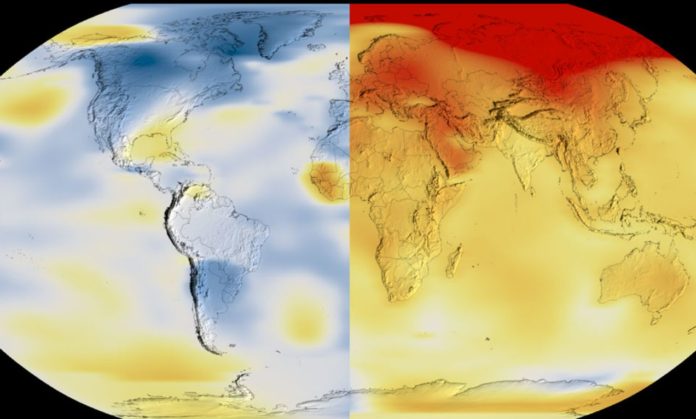The Universe’s light reveals how global warming leads to locally unpredictable weather on Earth.
Climate change makes the weather more unpredictable and causes local droughts and temperature records to be broken, but scientists are still working on a theory that explains how local and global climates are connected. Now, a Niels Bohr Institute astrophysics student has adopted a mathematical technique inspired by studies into the Universe’s light to reveal how global warming leads to locally unpredictable weather on Earth.
With over 95% consensus among climate scientists, it is now obvious that the Earth is warming globally, and that this warming is primarily due to human activity.
Temperatures are rising faster than they have in the past, and the Earth is likely to be at its warmest in over 100,000 years. The planet has warmed by 1.1 degrees Celsius since the start of the Industrial Revolution around 250 years ago.
Climate change has brought us extraordinary heat records in recent years, such as last year, when Canada’s maximum temperature was nearly 50 degrees Celsius, five degrees higher than the previous record!
However, the issue is not confined to heat records: cold waves, droughts, storms, and precipitation have all reached unprecedented heights.
The study of how global warming contributes to local weather extremes is ongoing, though not entirely understood. Albert Sneppen, a master’s student, has just taken a step closer to understanding the link between global warming and local weather instability using a novel mathematical approach.
Albert Sneppen spends his time at the Cosmic Dawn Center, a basic research center affiliated with the Niels Bohr Institute and DTU Space in Copenhagen, studying astrophysics and is no stranger to black holes and exploding stars. He had the thought one day that a method for analyzing the distribution of light in the night sky may be applied to studying the distribution of temperature changes on the Earth’s surface.
The approach is particularly useful for interpreting the “Big Bang afterglow,” also known as cosmic microwave background radiation. Suddenly, Albert Sneppen saw an “aesthetic coincidence” between the distribution of heat on the scales of the Universe and the scales of the Earth.
“For decades, the heat radiation of the early Universe has been studied in the night sky. Researchers use the so-called »angular power spectrum« which tells you how much all parts of the night sky — both locally and globally — are connected. And that is exactly what you want in climate research; a method of examining all scales of climate change at the same time ,” Albert Sneppen adds.
The new mathematical perspective supports previously undiscovered climate structures.
It not only reproduces Earth’s temperatures and confirms reported climate patterns on the biggest scales, but it also demonstrates how local weather changes, i.e. on tiny scales, are formed. It turns out that large-scale fluctuations and differences are followed by small-scale fluctuations and differences.
“When we humans perturb Earth’s temperature on the largest scales, it causes larger temperature differences on all scales from regions of about 2,000 km, and all the way down to 50 km,” Albert Sneppen explains.
To put it another way, climate change causes temperature disparities to widen locally, and significant temperature differences lead to ever more extreme weather patterns.
“The instability and volatility of the weather has generally grown since the industrial revolution, but has especially gained momentum over the last 40 years,” says Albert Sneppen. “Together with several other theoretical and observational studies, this model indicates that the weather will become even more unstable in the coming decades.”
Albert Sneppen’s article was recently published in the European Physical Journal Plus.
Image Credit: Getty
You were reading: How Climate Change Is Increasing Risk of Local Warming – New Research Found A Link
